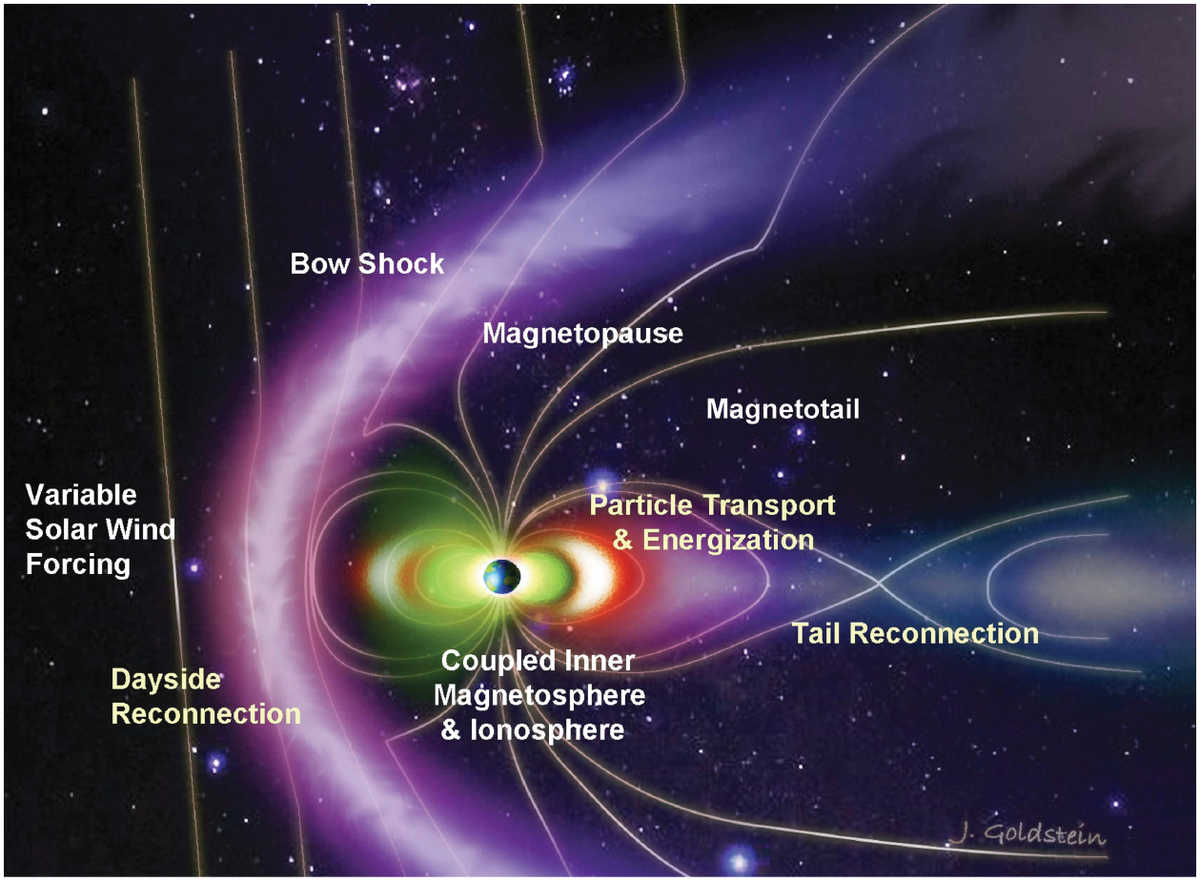SwRI: Scientists Map Magnetic Reconnection in Earth's Magnetotail
Posted: Fri Nov 16, 2018 1:53 pm
Scientists Map Magnetic Reconnection in Earth's Magnetotail
Southwest Research Institute | 2018 Nov 15
Satellites Encounter Magnetic Reconnection in Earth's Magnetotail
Swedish Institute of Space Physics (IRF) | 2018 Nov 15
Electron-Scale Dynamics of the Diffusion Region during Symmetric Magnetic Reconnection in Space ~ R. B. Torbert et al
Southwest Research Institute | 2018 Nov 15
Analyzing data from NASA’s Magnetospheric Multiscale (MMS) mission, a team led by Southwest Research Institute (SwRI) has found that the small regions in the Earth’s magnetosphere that energize the polar aurora are remarkably calm and nonturbulent. The new observations, which also revealed intense electron jets associated with the regions where magnetic reconnection occurs, were outlined in a paper published in Science Nov. 15.
- The latest findings of the SwRI-led Magnetospheric Multiscale mission detailed the magnetic reconnection processes taking place in the Earth’s magnetotail. Scientists discovered that the tail regions where magnetic fields meet, break apart and reconnect are surprisingly nonturbulent, but create hypersonic jets of electrons.
“On the sunward side, explosive magnetic reconnection events dump energy into Earth’s magnetosphere, the region surrounding the Earth dominated by its magnetic field,” said the paper’s lead author, Dr. Roy Torbert, the heliophysics program director at SwRI’s Department of Earth, Oceans and Space at the University of New Hampshire, Durham. “Reconnection on the night side is dumping energy into Earth’s atmosphere, as electrons travel down magnetic field lines and excite aurora. The more we understand about these processes, the better we can understand and model how ‘space weather’ could affect the technology we depend on.”
Magnetic reconnection — which occurs in both natural plasma environments such as those in space and in laboratory fusion experiments — is at the heart of space weather. Reconnection is responsible for explosive solar events, such as solar flares and coronal mass ejections, and drives disturbances in Earth’s space environment. Such disturbances not only produce spectacular auroras, but also the high-energy electromagnetic radiation they send toward Earth can shut down electrical power grids and disrupt satellite-based communication and navigation systems. ...
Satellites Encounter Magnetic Reconnection in Earth's Magnetotail
Swedish Institute of Space Physics (IRF) | 2018 Nov 15
Electron-Scale Dynamics of the Diffusion Region during Symmetric Magnetic Reconnection in Space ~ R. B. Torbert et al
- Science (online 15 Nov 2018) DOI: 10.1126/science.aat2998
arXiv.org > physics > arXiv:1809.06932 > 18 Sep 2018
